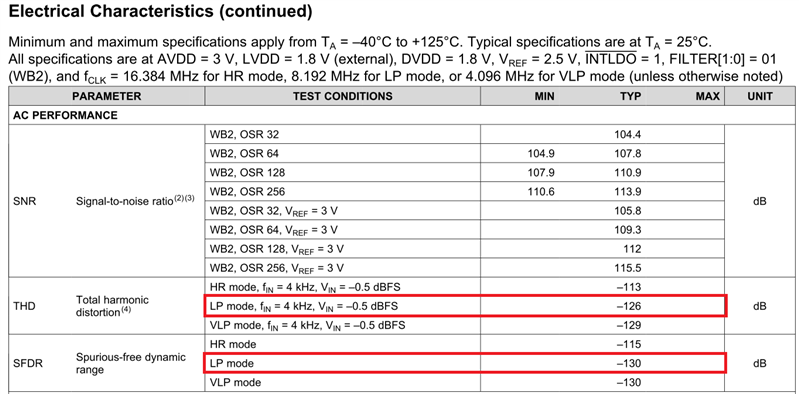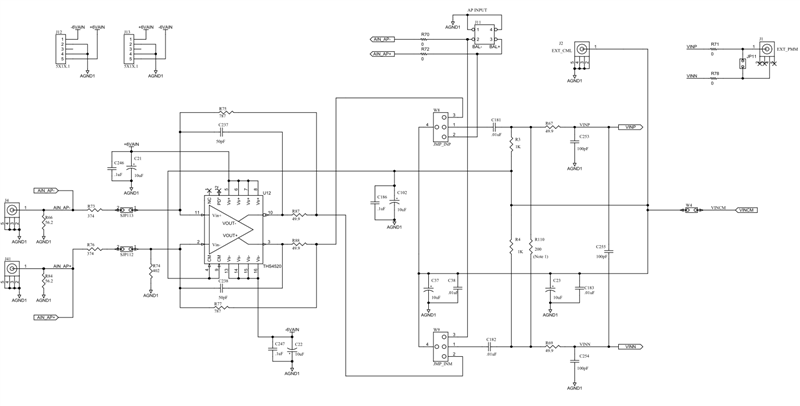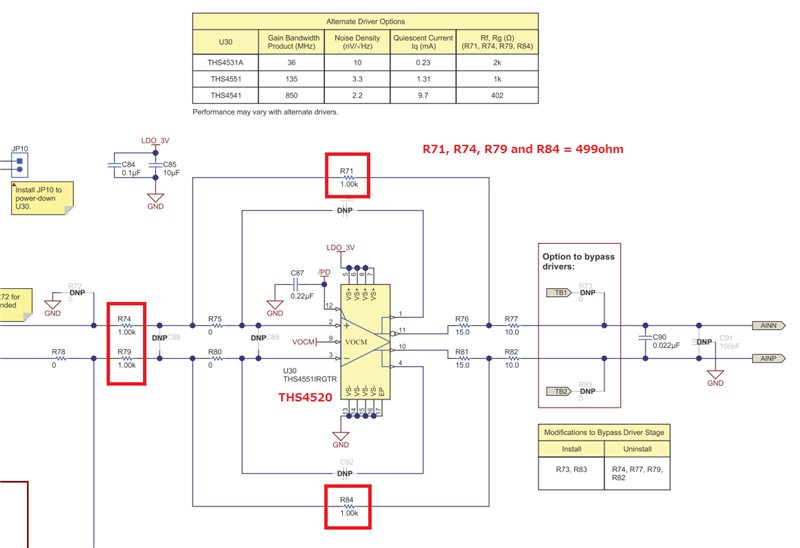Other Parts Discussed in Thread: , THS4551, THS4541, THS4520
Hi,
I got a feedback from our customer that 2nd harmonic distortion is higher than one which is mentioned in the data sheet by verifying ADS127L01EVM, so it is approximately -110dB when inputting 1kHz sine wave.
In addition, it doesn't change even if changing the operation mode(the high-resolution/low-power/very-low power modes) and VREF.
Could you please tell me how to improve this issue ?
Best regards,
Kato






